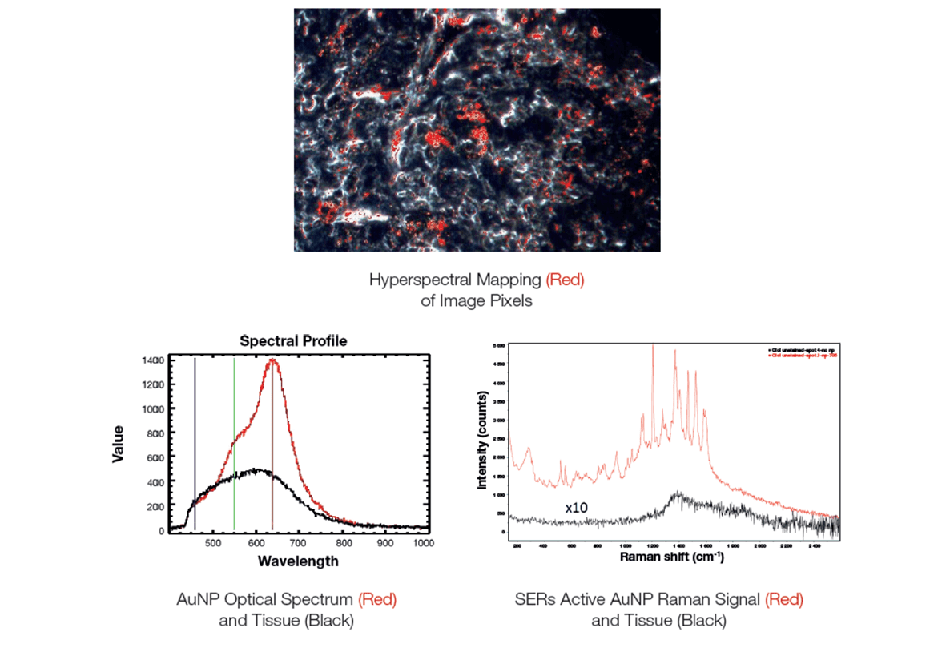
By combining HORIBA’s Raman microscopes with CytoViva’s Hyperspectral Imaging (HSI) microscopy module and Enhanced Darkfield (EDF) illumination, Raman analysis is faster and more powerful.
This innovative integration is of major interest for applications related to nanomaterials research, drug delivery, nanotoxicology studies and SERS nanoparticles characterization. Hyperspectral imaging microscopy allows rapid imaging across the sample with high sensitivity. Colored images generated from the spectra guide the user to easily locate nanoparticles and features of interest.
The patented CytoViva enhanced darkfield illumination improves the signal-to-noise ratio up to ten times over standard darkfield microscopes. The detection limit in size improves sufficiently to allow visualizing nanoparticles as small as 10 nm when isolated.
Raman spectroscopy is a powerful technology for research and industry and provides detailed information on sample properties such as chemical structure, phase, polymorphism, intrinsic material stress, contamination and impurities.
Integrating Raman with hyperspectral imaging and enhanced darkfield allows users to rapidly visualize the sample and target regions of interest. They can then leverage Raman measurements from the identical field of view to provide and confirm the chemical identify of nanoparticles or other sample elements.
CytoViva’s innovative enhanced darkfield illumination and hyperspectral imaging are perfectly complemented by HORIBA’s world-leading Raman instrumentation. Benefits of combined technologies far exceed the sum of their parts; in this case the chemical specificity afforded by Raman can be quickly targeted to individual nanoparticles which the CytoViva components localize within minutes or even seconds.
Dr. Andrew Whitley, Vice President and Global Director of Business Development, HORIBA Scientific
In this application example, gold nanoparticles are imaged in tissue (top), with the corresponding optical (bottom left) and Raman (bottom right) spectra showing clear differences between the nanoparticles and tissue. Visualization of the nanoparticles is made simple with the hyperspectral imaging, while Raman provides a detailed chemical fingerprint.
The combined offerings are available from HORIBA now for new system sales and for upgrades to existing Raman systems by HORIBA and microscope systems by CytoViva. More information can be found at: https://www.horiba.com/en_en/raman-cytoviva/.